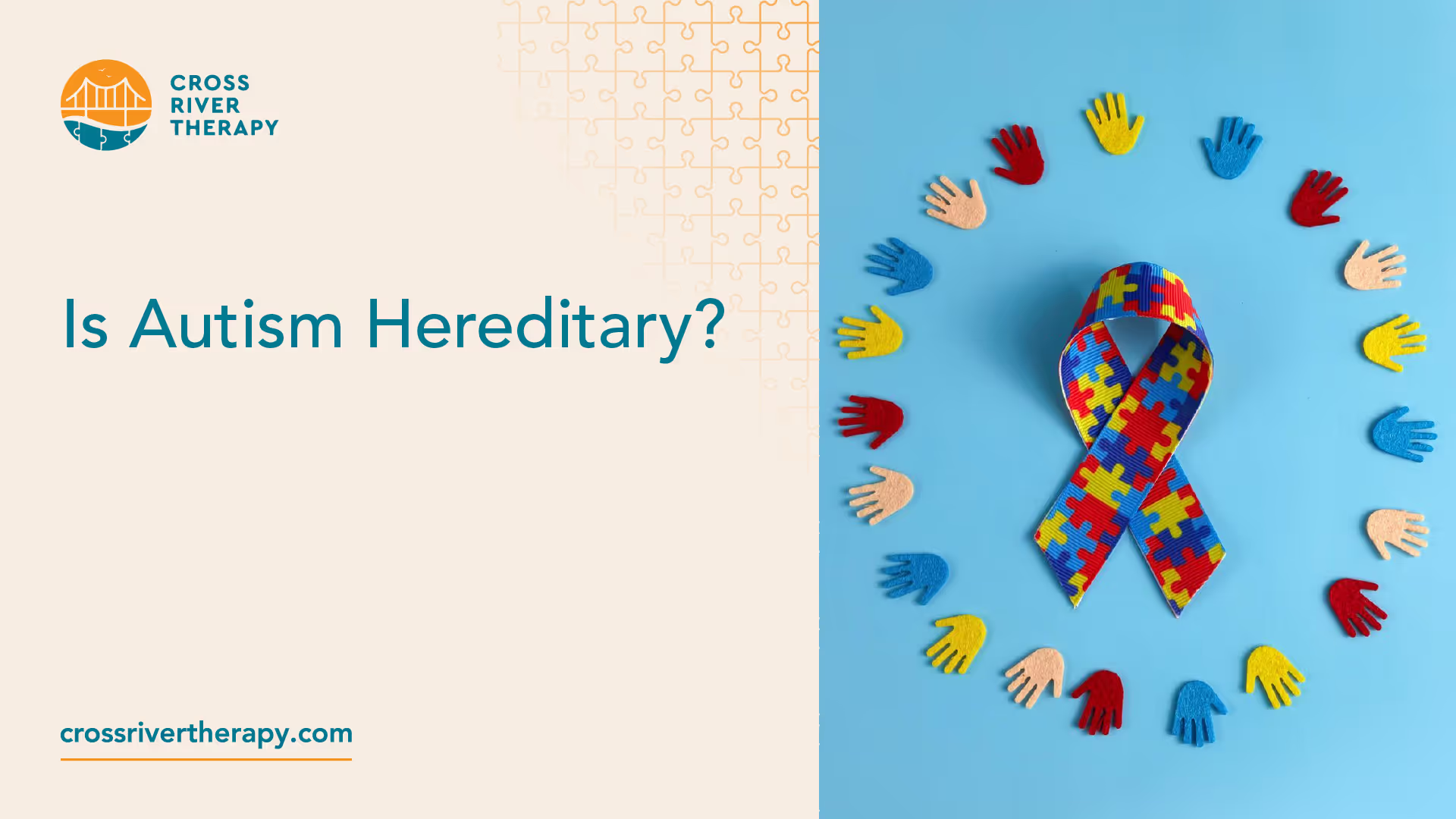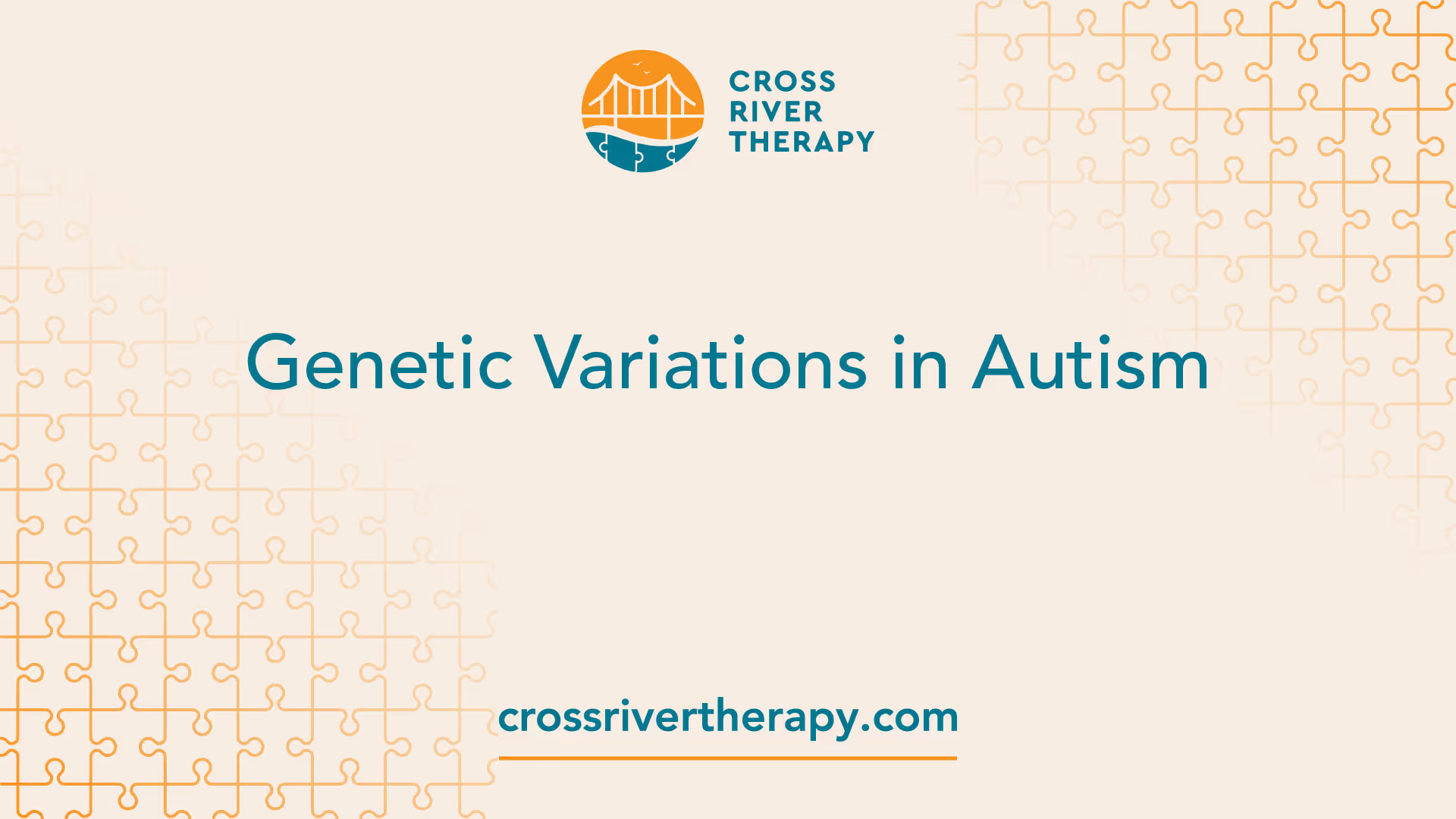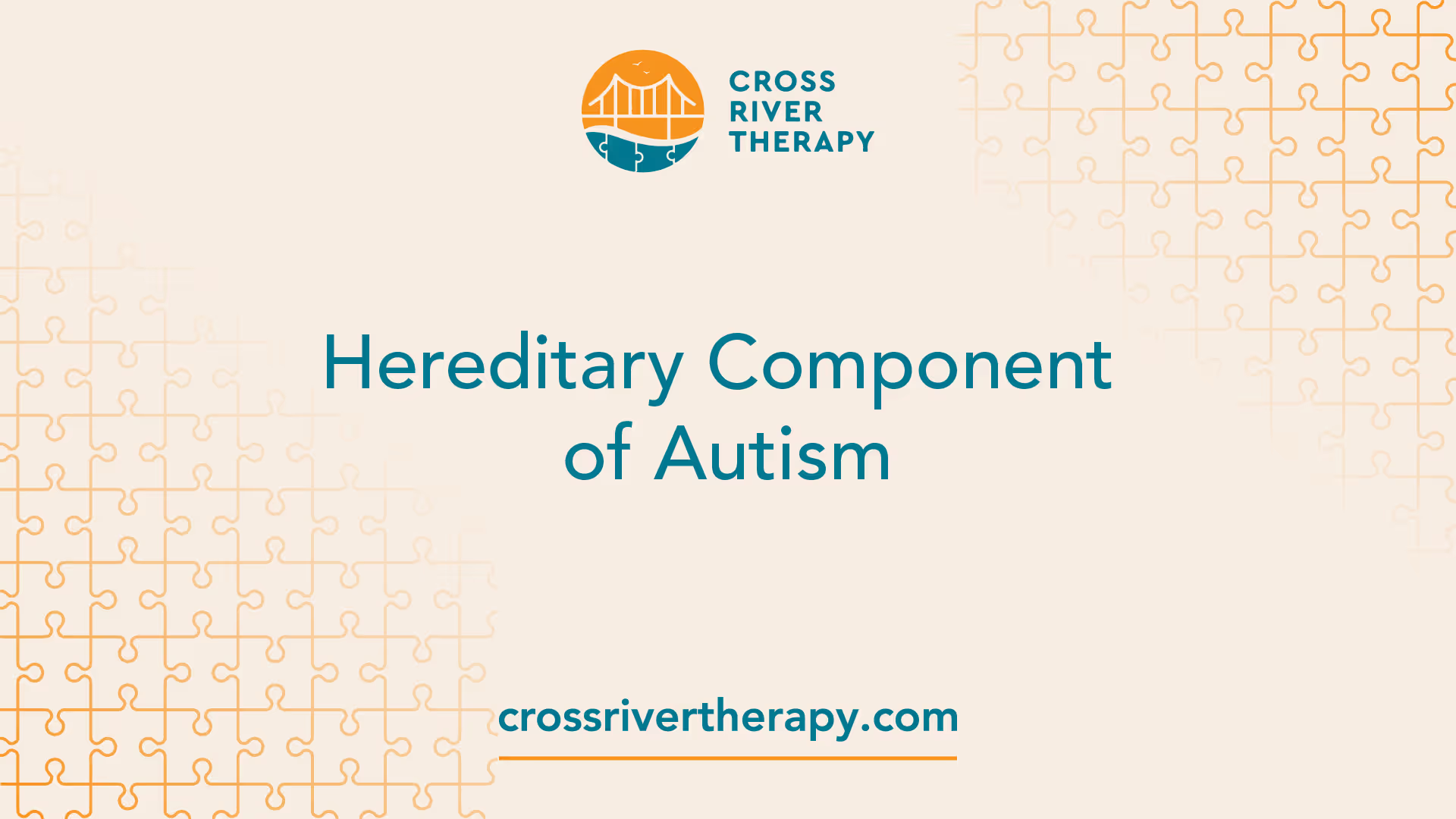Is Autism Hereditary?
Learn the genetic influences and implications for treatment. Find answers now!
Understanding Autism Genetics
Autism Spectrum Disorder (ASD) is a complex condition with a multifactorial etiology. While the exact causes of autism are still being studied, there is evidence to suggest a strong genetic component. This section explores the prevalence of autism, gender differences, and the role of genetic factors in the development of autism.

Prevalence and Gender Differences
ASD is a common condition, with the prevalence of the disorder in the United States estimated at 1 in 44 children in 2021, a significant increase from the reported prevalence of about 1 in 2,000 in the 1980s. This rise in diagnoses over the past few decades indicates a growing awareness and understanding of autism spectrum disorder.
ASD is more than four times as common in boys than it is in girls, highlighting a significant gender difference in the prevalence of autism spectrum disorder. The reasons for this gender disparity are not yet fully understood and continue to be an area of research.
Genetic Factors and Risk
Genetic factors play a significant role in the development of autism. It is estimated that genetic factors contribute 40 to 80 percent of the risk for developing ASD. Changes in over 1,000 genes have been reported to be associated with ASD. While many common gene variations are thought to affect the risk of developing ASD, not all individuals with these gene variations will be affected, and most gene variations have only a small effect individually.
Autism has a strong heritable component, with at least 50% of genetic risk predicted by common genetic variation and another 15-20% due to spontaneous mutations or predictable inheritance patterns. Numerous studies, including twin studies and family studies, have estimated the heritability of autism to be around 80 to 90%, indicating that genetic factors play a substantial role in its etiology.
ASD has a tendency to run in families, suggesting a hereditary component to the condition. However, people with gene changes associated with ASD generally inherit an increased risk of developing the condition, rather than the condition itself. In cases where ASD is a feature of another genetic syndrome, it can be passed on according to the inheritance pattern of that syndrome.
Researchers have identified various genetic variations associated with ASD, including common gene variations, rare gene mutations, and chromosome abnormalities. These genetic variations contribute to the risk of developing autism and can impact brain development and neuronal function [4].
Understanding the genetic underpinnings of autism is crucial for advancing research, improving diagnosis, and developing targeted therapies for individuals with ASD. Ongoing studies continue to shed light on the intricate relationship between genetics and autism, bringing us closer to a comprehensive understanding of this complex disorder.
Genetic Variations in Autism
Autism spectrum disorder (ASD) has a strong genetic component, with genetic factors estimated to contribute between 40 to 80 percent of ASD risk. Changes in over 1,000 genes have been reported to be associated with ASD. However, it's important to note that not all individuals with these gene variations will be affected, and most gene variations have only a small effect individually.

Common Gene Variations
Many common gene variations are thought to affect the risk of developing ASD. While these variations may increase the susceptibility to ASD, they do not guarantee that an individual will develop the condition. Each gene variation has a small effect individually, and it is the combination of multiple gene variations that may contribute to an increased risk of ASD.
Rare Gene Mutations
In about 2 to 4 percent of people with ASD, rare gene mutations or chromosome abnormalities are thought to be the cause of the condition. Mutations in specific genes such as ADNP, ARID1B, ASH1L, CHD2, CHD8, DYRK1A, POGZ, SHANK3, and SYNGAP1 have been associated with ASD. These gene mutations often present with additional signs and symptoms that may affect various parts of the body.
Chromosome Abnormalities
Chromosome abnormalities are another form of genetic variation associated with ASD. Changes in the structure or number of chromosomes can contribute to the development of ASD. For example, individuals with certain chromosomal conditions, such as Fragile X syndrome, have an increased risk of ASD. Additionally, copy number variations (CNVs) are submicroscopic structural variants in chromosomes that include duplications, deletions, translocations, and inversions. CNVs are estimated to directly cause roughly 10% of ASD cases.
Research has shown that many of the genes associated with ASD are involved in the development of the brain, specifically in aspects such as production, growth, and organization of nerve cells (neurons). Studies indicate that some individuals with ASD have more neurons than normal during brain development, as well as overgrowth in parts of the outer surface of the brain known as the cortex.
Understanding the genetic variations in autism is essential for identifying potential risk factors and developing targeted therapies. Ongoing research in this field aims to unravel the complex genetic underpinnings of ASD and provide valuable insights for personalized treatment approaches. For more information on genetic testing recommendations and therapeutic targets for ASD, refer to our article on implications for treatment and precision medicine.
Hereditary Component of Autism
Autism is a complex neurodevelopmental disorder with a strong genetic basis. Research consistently demonstrates a higher prevalence of autism among siblings and in families with a history of autism. Numerous studies, including twin studies and family studies, have estimated the heritability of autism to be around 80 to 90%, indicating that genetic factors play a substantial role in its etiology.

Familial Patterns
When one child is diagnosed with autism spectrum disorder (ASD), the chances of having another child with ASD increases. Studies have shown that if you already have one child with ASD, there is a 1 in 5 chance that your next child may develop autism. If you have more than one child with ASD, the odds of having another child with ASD are even higher.
Furthermore, identical twin studies have provided valuable insights into the heritability of autism. These studies have shown that if one identical twin has autism, there is a range of concordance for the other twin, typically between 36% and 95.7%. The concordance for a broader phenotype, which includes milder autism-related traits, is usually found at the higher end of the range. For siblings and fraternal twins, the concordance for autism falls between 0% and 23.5%.
Inheritance Patterns
Autism does not follow a simple Mendelian pattern of inheritance. Instead, it is considered a complex genetic disorder influenced by a combination of common gene variations, rare gene mutations, and chromosome abnormalities. The heritability estimate of autism ranges from 40% to 80%, with common genetic variation accounting for at least 50% of the genetic risk and spontaneous mutations or predictable inheritance patterns contributing to an additional 15-20%.
Familial aggregation studies have shown that the risk of autism increases in families, particularly in first-degree relatives. People with gene changes associated with autism generally inherit an increased risk of developing the condition, rather than the condition itself. While specific genes and genetic variations have been identified, the genetic landscape of autism is complex and continues to be an active area of research.
Understanding the hereditary component of autism is crucial for further research, genetic counseling, and early intervention strategies. By identifying the genetic influences and inheritance patterns associated with autism, researchers can gain insights into the underlying mechanisms and develop targeted interventions to support individuals with autism spectrum disorder and their families.
Genetic Influences on Brain Development
Understanding the genetic influences on brain development is essential in unraveling the complex relationship between genetics and autism. Many of the genes associated with Autism Spectrum Disorder (ASD) play a crucial role in the development of the brain, particularly in aspects such as the production, growth, and organization of nerve cells, known as neurons.
Role of Brain Development Genes
Genes linked to ASD are involved in various aspects of brain development, including the production, growth, and organization of neurons, synapses, and dendrites. These genes impact the development of different regions of the brain, particularly the frontal and temporal lobes of the cortex, which are responsible for emotions, social behavior, and language.
While the exact mechanisms by which these genes contribute to the development of autism are still being studied, research suggests that some individuals with ASD may have more neurons than usual during brain development, along with overgrowth in certain parts of the cortex.
Neuronal Abnormalities in Autism
Neuronal abnormalities are commonly observed in individuals with ASD. These abnormalities occur in the frontal and temporal lobes of the cortex, affecting areas of the brain involved in emotions, social behavior, and language. The exact nature and extent of these abnormalities can vary among individuals with autism.
Research has also identified shared genetic risk factors between autism and other neurological and psychiatric disorders, such as schizophrenia. Genes strongly associated with autism were found to be more likely associated with genes that increase the risk for schizophrenia, indicating an overlap in genetic factors across different disorders.
Understanding the role of brain development genes and the neuronal abnormalities seen in autism is critical for gaining insights into the underlying mechanisms of the disorder. It highlights the importance of ongoing genetic research in identifying specific genes and pathways involved in autism, which can ultimately contribute to the development of targeted therapies and interventions.
To learn more about the hereditary component of autism and how genetic factors interact with environmental factors, continue reading our article on Is Autism Hereditary?.
Environmental Factors and Genetic Risk
While genetic factors play a significant role in the development of autism spectrum disorder (ASD), it is important to understand that environmental factors can also contribute to the risk. In this section, we will explore the interaction between environmental factors and genetic risk in relation to autism.
Interaction with Environmental Factors
Research suggests that the risk of developing ASD is influenced by a combination of gene variants and environmental factors. Parental age and birth complications are among the environmental factors that have been identified as potential contributors [1]. It is important to note that the specific environmental factors involved in the development of autism are still being studied and many have not yet been identified.
Parental age is one of the factors that has been associated with an increased risk of autism. Advanced maternal and paternal age at the time of conception has been linked to a higher likelihood of having a child with ASD. However, it is important to remember that the majority of children born to older parents do not develop autism.
Birth complications, such as maternal infections during pregnancy or difficulties during labor and delivery, have also been identified as potential environmental factors that may increase the risk of autism. However, it is important to note that not all children who experience birth complications will develop autism, and most children with autism are born without any significant complications.
Parental Age and Birth Complications
According to studies, children who inherit rare mutations from unaffected parents in combination with polygenic risk are more likely to have autism. This combination can explain why parents carrying a single rare mutation may not exhibit signs of autism, even if their children do. This supports the liability threshold model in behavioral genetics, suggesting an additive effect of genes influencing the probability of developing autism.
It is important to keep in mind that autism is a complex neurodevelopmental disorder with a multifactorial etiology. While genetics and environmental factors play a role, the specific mechanisms by which they interact to contribute to ASD are still being studied.
Understanding the interplay between genetic and environmental factors is crucial for gaining a comprehensive understanding of autism. Further research is needed to identify specific environmental factors and their interactions with genetic risk factors in the development of autism. By continuing to investigate these factors, we can gain insights that may lead to improved prevention, early intervention, and treatment strategies for individuals on the autism spectrum.
Implications for Treatment and Precision Medicine
As research continues to advance in the field of autism genetics, there are important implications for the development of treatment strategies and the application of precision medicine. By understanding the genetic factors involved in autism, healthcare providers can tailor interventions to address the specific needs of individuals on the autism spectrum.
Genetic Testing Recommendations
To unlock the potential of precision medicine in autism, genetic testing is recommended for families and individuals at risk for autism spectrum disorder. Genetic testing can identify specific gene variations or mutations that are strongly linked to autism. This information is valuable in several ways:
- Diagnosis: Genetic testing can aid in the diagnosis of autism spectrum disorder by identifying specific genetic variations that contribute to the condition. This can provide a clearer understanding of the underlying causes and help healthcare providers develop targeted treatment plans.
- Risk Assessment: Genetic testing can assess the risk of autism in families and individuals, especially in cases where there is a family history of autism or the presence of certain genetic variations associated with the condition. This information can guide early intervention strategies and support services.
- Precision Medicine: Genetic testing results can guide the development of therapeutics based on the identified genetic targets. By understanding the genetic profile of an individual with autism, healthcare providers can personalize treatment approaches to address specific genetic variations or mutations. This approach holds promise for more effective and targeted interventions.
Therapeutic Targets and Precision Medicine
The identification of genes strongly linked to autism and neurodevelopmental disorders has paved the way for precision medicine approaches in the treatment of autism spectrum disorder. Precision medicine aims to develop treatments that are tailored to the specific genetic variations or mutations present in an individual with autism.
By understanding the role of these genes in brain development and neuronal abnormalities associated with autism, researchers can identify potential therapeutic targets. These targets may involve genetic pathways or specific proteins that contribute to the deficits in communication, social cognition, and behavior observed in individuals with autism.
The development of precision medicine treatments requires a comprehensive understanding of the genetic landscape of autism and the specific variations or mutations that contribute to the condition. This ongoing research holds promise for more targeted, personalized interventions that address the underlying genetic factors associated with autism spectrum disorder.
It's important to note that while precision medicine shows great potential, it is still an emerging field. Further research and clinical trials are necessary to determine the safety and efficacy of these targeted treatments. However, the advancements in genetic testing and understanding of autism genetics provide a foundation for future developments in precision medicine for individuals on the autism spectrum.
References
[1]: https://medlineplus.gov/genetics/condition/autism-spectrum-disorder/
[2]: https://www.uclahealth.org/news/release/new-genetic-clues-uncovered-largest-study-families-with
[3]: https://en.wikipedia.org/wiki/Heritabilityofautism
[4]: https://www.ncbi.nlm.nih.gov/pmc/articles/PMC6710438/
[5]: https://health.clevelandclinic.org/are-siblings-at-greater-risk-of-autism
[6]: https://www.mountsinai.org/about/newsroom/2022/study-identifies-genes-strongly-linked-to-autism-and-neurodevelopmental-disorders



